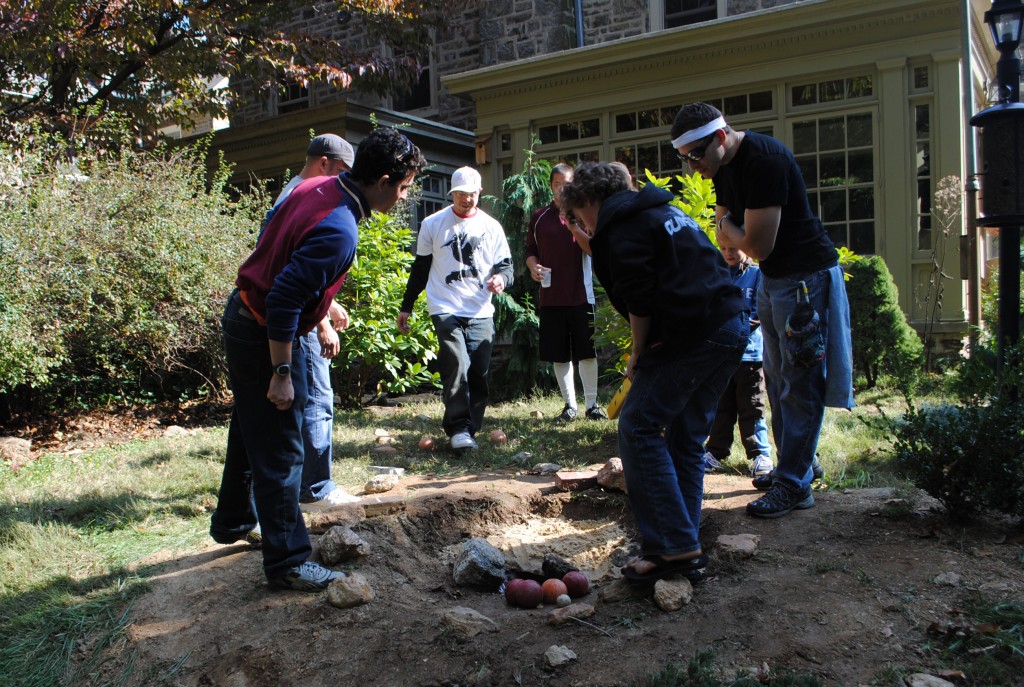We play games. Whether it is strictly for entertainment purposes, to pad one’s ego by winning, or to fill time, we all play games. These games we play come in every shape and size. We play them by ourselves, against another, in pairs against other pairs, or with groups of people against another group. We play them inside or outside. Some involve gross physical movement while others are relatively sedentary affairs. Some are more of a mental challenge, some more physical, and most are some combination of both. Games, in all of their varieties, are as much a part of the human experience as anything else. To be human is to play them.
With all that could possibly constitute a game, it seems that there must be something that is in opposition to the player. This could be another player, it could be the puzzle itself that needs to be solved, or it could be one’s own mind. For instance, in chess, a player is trying to outwit his/her opponent. The opponent serves as one point of opposition. There is another though. If the player’s chess opponent seems to be a superior, the player must not allow themselves to be intimidated. They have a mental battle going on against both the opponent and against themselves. The same can be said of the reverse scenario. If the player’s chess opponent is deemed inferior, then it is easy for the player to let down their guard, play too relaxed, and then make a costly error. Chess is a game against two opponents simultaneously.
Then there is golf, a game that is equally as much of a mental challenge as it is a physical. In both, the opposition is still just one’s self. The self is the first point of opposition. Then, there is the golf course itself, with its rolling hills, thick fringe grasses, water hazards, sand traps, and sloping greens. A player may be in control of themselves, but a given course may prove too mighty of a challenge. These are a golfer’s two opponents. Now golfers may say that they are in constant competition with the other golfers in their round. This is true, in a way, but not directly. A golfer may play well, conquer a course and lose a round to another who played better. In this case, they lost to their opponent, but the opponent did not directly affect their round. The opponent did not knock the player’s golf ball away or stand in the player’s way, obstructing his/her vision. If the opponent’s masterful play affected the player’s round, it was that the player let it get to their head and they lost their own mental battle.
Most team sports such as football pit groups of players against another group both physically and mentally. This type of opposition is apparent, as players on both teams are engaged with each other physically and affect each others’ physical movements. This is also a mental game, as players are often battling with themselves, specifically after mistakes are made. One mistake often leads to another as they begin to “overthink.” The field, however, is flat, with uniform boundaries and a fairly uniform playing surface. This typically does not serve as much of an obstacle. This can change when mother nature gets involved. Strong winds, heavy rains and snow can quickly turn a benign playing surface into a fierce point of opposition. On days like this, players of these types of games clearly face three distinct opponents, but this is a special circumstance. It is not everyday that the football player faces the three-headed monster.
This brings us to the game of Stones. Once you play it, it becomes quite clear that the three-headed monster is staring you down every single game. Much like other games, it is critical that players keep their mental edge and confidence. A few bad throws and confidence can dwindle. The issue with stones is that even a strong throw that hits right where a player is aiming can become worthless as either the course does something nasty with it or the opponent does. The courses, as obstacle-laden as any golf course, can prove to be a ruthless opponent. Its steep slopes and unpredictable surfaces can quickly take a throw that appears on target and send it well off course and into the bottom of a body of water. Hanging tree branches and uneven footing constantly force players to throw in ways that are unnatural. Boulders, tree trunks and other visual obstructions make certain throws a mere guessing game. While players may enter a game as confident as could be, the course itself could quickly steal it. Then, of course, there are times when one believes that they have conquered their own mind and the course. They have thrown a perfect ball that even a great distance away is kissing (touching) the mark. In golf, this is equivalent to the tee shot on a par 3 that comes to rest at the edge of the cup. The throw seems perfect, but in this game, the monster can rear its third ugly head. After a player’s masterful shot, their opponent can throw one better, striking the player’s ball with their own, dislodging it from its spot and sending it well out of play. Right when a player thinks he/she has slain two of the heads, the third appears and conquers the player.
Imagine golf where your perfect approach shot could be knocked away by your opponent. Imagine football played on a field of stones, hills, and valleys. The three headed monster does not exist in most games. It does however, in Stones.


Kudos to KYW, heard about it on the radio. Looks like a blast!